Langtang Trek Overview
Amongst several well-known trekking trails of Nepal, the Langtang Trek is one of the hidden gems. Situated in the Rasuwa district of Nepal, the Langtang Trekking is also popularly known as a trek to the 'Valley of Glaciers.'
Relatively a short trek in comparison to other famous trails like Everest and Annapurna, the trekking route of Langtang is an ideal option for people looking for a short, off-beat path to the thrilling Himalayas.
Our Langtang Trekking Package comprises everything that adventure-seekers are looking for, from lowlands to rocky heights, giant waterfalls to fast-flowing rivers, and deep forests to open fields in the lap of the Himalayas.
Dominated by the Langtang Himalayas, you can witness astonishing views of mountains like Langtang Lirung (7227 m), Langtang Ri (7205 m), Naya Khang (5844 m), Yala Peak (5520 m), etc., during the trek.
As you pass through local settlements, dense forests, suspension bridges, praying walls, and open fields, the route leads you inside the Langtang National Park, where you might witness wildlife like musk deer and wild monkeys.
Along with natural beauty, the journey doesn't fall behind on cultural aspects as well. During the trek, you get to witness and experience the Sherpa culture and tradition influenced by Tibetan Buddhism.
The trek usually ranges from 6-8 days which begins with a drive from Kathmandu to Syabrubesi. Following a few days of the trek, you arrive at the highest settlement point of the trek, a Sherpa Village named Kyanjin Gompa (3870 m).
Unlike other famous trekking trails of Nepal, this region is less crowded, with a diverse natural and cultural beauty to offer. You can expect to have a unique trekking experience with the Langtang Journey Nepal.
Although off-beat, the Langtang trekking route doesn't fall behind on the experience it has to offer to trekkers. During this trek of 8 days, you will get to witness the diverse range of the Himalayas.
The cultural aspect adds more beauty to your entire itinerary to Langtang, as you will be exploring several traditional Sherpa and Tamang villages on the route.
Further, the trek takes you to the highest viewpoints of the trip, Kyanjin Ri (4773 m) and Tsergo Ri (5000 m), from where you get to witness a 360-degree view of mountains. There cannot be a more suitable option than the Langtang trek for people looking for exceptional adventure in the Himalayas.
Benefits of choosing our Langtang Trekking Package
- We have qualified and knowledgeable guides with years of experience in leading the trip to the Langtang region.
- We have a safety-focused approach, always keeping our client's safety at the top.
- All our packages can be customized according to each trekker's time and preference.
- We focus on small group sizes for personalized attention.
- We have strong local connections to provide you with an authentic trekking experience.
- We give high emphasis on sustainable travel practices and environmental sustainability.
- We have competitive costs and provide value for money.
- We offer 24/7 customer support during the trek.
- We give Pre-trip online and offline briefings.
- All our itinerary is designed with a keen focus on providing trekkers with the best experience possible.
Is the Langtang Trekking Package the trip you are looking for 2025?
Our trekking package is the perfect option for those who are looking for a short itinerary of 8 days in the mountains. With its stunning natural beauty, rich cultural heritage, and diverse landscapes, this route offers a unique and rewarding experience for trekkers.
The trail takes you through dense forests and charming villages, offering you an opportunity to immerse yourself in the local culture and witness spectacular views of snow-capped peaks.
Whether you're a beginner or an experienced trekker, the Langtang Trip Itinerary is suitable for everyone, making it an ideal choice for adventure lovers seeking a memorable journey in the Himalayas.
What does a day during the Langtang Trek in Nepal look like?
The day during the Langtang itinerary begins with breakfast in the serene environment and offers unique excitement and adventure every day.
After having a hearty breakfast, you will hit off the trail as you walk through diverse landscapes, including lush forests, rhododendron forests, and alpine meadows, offering stunning vistas at every turn.
Along the way, you'll meet friendly locals and explore the Buddhist monasteries, providing insights into the unique culture of the region. For lunch, you will stop at one of the villages and refuel with delicious meals.
As the day comes to an end, you will arrive at the set destination of the day and enjoy the rest of the evening, chatting with fellow trekkers while relishing the majestic views.
An adventure of a lifetime with Langtang Trekking in 2025 and 2026
Your itinerary to Langtang is truly an adventure of a lifetime, combining the thrill of trekking through serene nature with the prospect of exploring the cultural treasures of the Langtang region.
Taking you through some of the remote areas, the trek offers a sense of tranquility amidst the wild mountain scenery. As you walk inside the route of the Langtang National Park, you'll have the chance to witness rare wildlife, such as the endangered red panda.
From the lush green forests at the lowland to the highest vantage point of the region, you get to enjoy the magnificent views of the mountains all along the route. The Itinerary is not just about the physical challenge but also about engaging yourself in the magnificence of nature and creating memories for a lifetime.
How to get prepared for the trek to Langtang?
If you are about to embark on the trek to Langtang, then proper preparation is necessary to ensure a successful and enjoyable trekking experience.
First of all, you should make sure that you are in good health. It is recommended to engage in regular physical exercise and build your stamina levels before the trek so that you will not have any problem walking on a rugged trail during the trek.
The next thing to do is pack essential items such as sturdy trekking gear, appropriate clothing, and a good-quality sleeping bag. Make sure to invest in some cost-valued trekking gear and clothing.
If you need any kind of customization or adjustment on the itinerary of our package, you can freely contact us so that we can arrange it according to your preference.
After you have prepared yourself physically and mentally, you are all set to embark on the adventure to the Langtang region.
Langtang Trek Cost and Budgeting for 2025 and 2026
Our Langtang Trek cost between $599 and $899 per person, depending on factors such as the trek's duration, itinerary, transportation, accommodation, guide and porter. our trek package is all inclusive package that includes all the essential services as mentioned. This package provides three times meals, twin sharing accommodation, guide, porter, required transport etc. You will be free to choose the foods from the menu.
For a more personalized experience, private packages are available, allowing you to adjust the itinerary, travel at your own pace. While private treks provide greater flexibility, they tend to cost slightly more. Regardless of the trek type, it is advisable to carry extra cash to cover miscellaneous expenses like snacks, souvenirs, hot showers, or tipping.
Whether you’re traveling solo, in a group, or with friends and family, the Langtang Trek offers exceptional value and an unforgettable Himalayan adventure.
Please check the below table for the group price for Langtang trek
No. of Pax | Starting Price | Inquiry |
1 | USD 899 | |
2 to 5 | USD 699 Per Person | |
6 to 10 | USD 599 Per Person |
Connect with us to learn more about the Langtang Trek cost and customize your ideal trekking experience for 2025 and 2026.


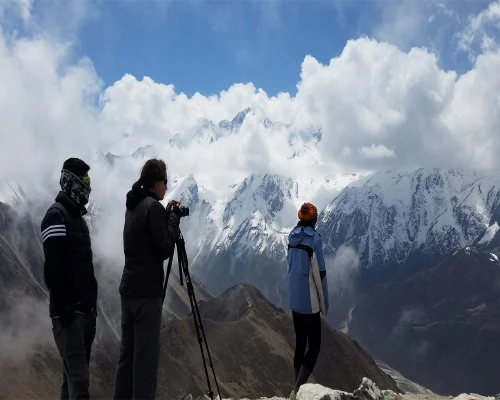
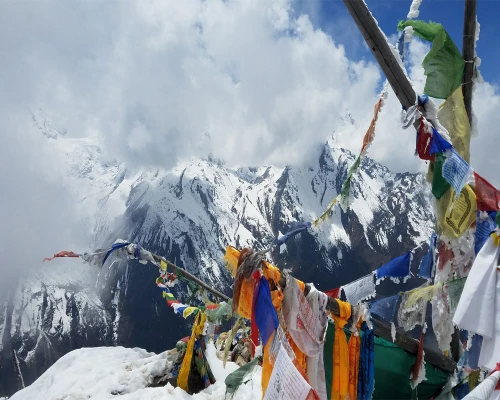
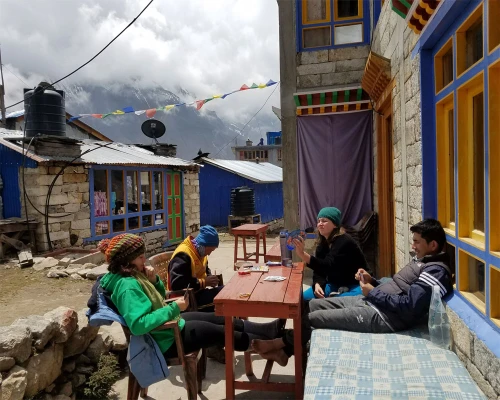
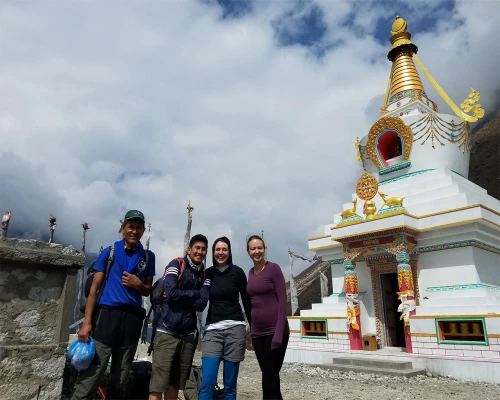
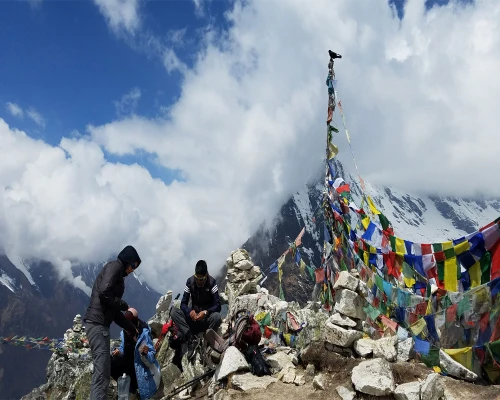
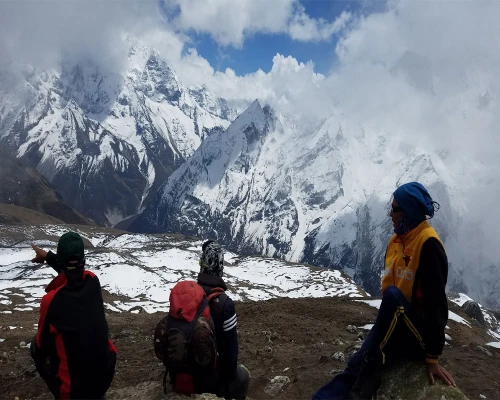
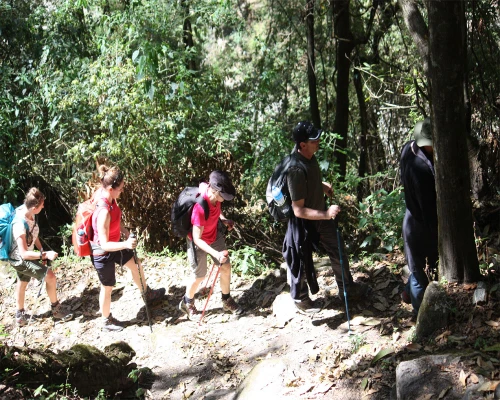



 6 reviews
6 reviews